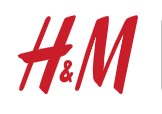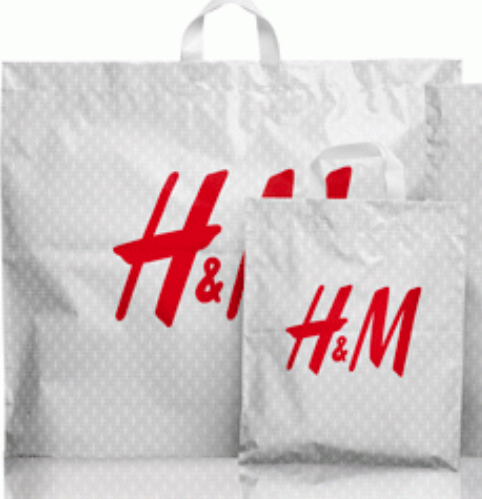Introduction
Hennes and Mauritz or H&M is a Swedish retail company that specialises in clothing and accessories for the whole family within the fast-fashion paradigm. It operates in 60 countries and has a developed vast network of online shops. Under the main H&M brand, there are several sub-brands such as COS, ARKET, & Other Stories, FaBric Scandinavian AB and others. Its combined network is the second-largest retail brand in the world. The company employs a combined staff of 148.000 people around the world. The revenues of the firm as of 2016 constituted 25 billion U.S. dollars, and the net income is 2.1 billion, which is a substantial result (H&M: annual report 2016).
Due to the financial and image success of H&M, it is paramount to review this brand and strategise its development in order to practice brand management skills. Thus, in this paper, multiple aspects of the H&M brand will be examined, including inventory, ownership, history, elements and other details, the analysis will be conducted, and recommendations will be offered.
Details About the Brand
History, Ownership and Products
The company was founded in 1947 and was called “Hennes.” It was a woman’s affordable clothing shop in Sweden (H&M group n.d.d). Several years of growth and success led the owner, Erling Persson, to buy Mauritz Widforss store, and create H&M, the clothes shop for men and women. In 1977, the brand expanded its focus to children and teenagers, adding cosmetics (within a sub-brand) and accessories. Around 1998, the company began its online expansion.
Value and Distribution
In comparison to 2015, the company demonstrated a decrease in value, as annual net incomes have decreased by 10%. Nonetheless, stock market value increased by 28% in addition to the 15% growth in assets (H&M: annual report 2016). Yet, in 2018 its net profit dropped by 32% already, which is a result of tough competition from Zara (Sweden: H&M lays out a turnaround plan to combat falling profit 2018). The brand is distributed by means of 4,553 shops in 62 countries and online websites listed in 47 countries (Sales development in the third quarter 2017; H&M group n.d.a).
Brand Positioning
The brand positions itself as an affordable clothing and accessories retailer for trendy clothes. It offers cheap but fashionable items of style to young men, women and teenagers (Dover 2018). The target market is men and women from about 16 to 24 who prefer to follow the trends but do not want to allocate much of their budget to clothing.
Brand Elements
- Name: Hennes and Mauritz or H&M (former Hennes)
- Logo and Symbol: Appendix 1, figure 1.
- Slogans: sustainable fashion, party all night, do it anyway
- Packaging: white plastic bags with logo. (Appendix 1, figure 2)
- Characters: young women, men and teenagers
- Jingles: none
Brand Inventory
Currently, H&M main produces wares in three categories: for men, women, children up to 14 years old. In the men’s category, the company sells general clothes, clothes for sports, underwear, accessories and footwear. For women, H&M offers clothing, sportswear, underwear, sleepwear, clothes for pregnant women, footwear, cosmetics and accessories. For Kids shops have regular clothes, footwear, sportswear, swimwear, accessories and all other items from adult categories (H&M: annual report 2016).
Brand Analysis
Brand Salience
The awareness of the brand, in accordance with Keller’s pyramid of brand resonance, is a key success variable for a firm (Latif, Islam & Noor 2014; Keller 2013). H&M is rather recognisable as popular news websites produce content that is related to the company, which contributes to translating the company’s values. In a buying situation, slogans such as “sustainable fashion” or “do it anyway” or “fashion and quality at the best price” the customer memory accepts the cues of “trendy,” “independent lifestyle,” “affordable.” (H&M group n.d.c).
Brand Performance
In terms of price, H&M is favourably different from its main competitor, Zara, as their items are relatively cheaper. Frequent discounts are also a part of its company’s policy, yet it is not different from other retail clothing stores. Customer’s service is at a decent level, according to the study performed by Textiles Intelligence Ltd (2007). Yet, there is room for improvement in terms of the online shopping experience (Creutz & Hurtig 2011).
Brand Imagery
The brand offers a variety of intangible associations through its websites and visual style of interior design in shops. It translates the values such as the continuous flow of ideas, variance in style, affordable clothing for trendy men and women and so forth (Interbrand 2014). Associations may include bright and rebellious personality, the absence of taboos and freedom of self-expression. It is different from its main competitor, Zara, that promotes more strict, classic and formal looks, which defines H&M’s imagery uniqueness in its segment.
Brand Judgments
Brand quality in H&M depends on low price, adherence to the latest tendencies, frequent collection updates and quality of wares. In regard to price, it manages to outpace its competitors, yet, according to Tyler (2018), the quality of clothing is better in Zara. In terms of fashion adherence, H&M also falls behind its rivals. The company has lots of items in stock, yet it experiences issues with selling them. All of these parameters yield slightly unpleasant brand judgments, which resulted in poorer performance.
Brand Feelings
H&M inspires acceptance of an individual as a part of society and promotes the self-expression and uniqueness of any person. A recent YouTube commercial promotes endless exploration of self and embracing of one’s personality (H&M group 2018). These qualities and perceptions inspire the feelings pertaining to youth and appear to work in accord with its marketing strategy. Since the target audience is young men and women from 16 to 24, the feelings seem to align with them.
Brand Resonance
Behavioural loyalty in H&M is promoted by the breadth of values and client identity. Virtually any young person who likes stylish clothes could be defined as its customer. The loyalty is reinforced by the variety of sale offers and lots of clothing items available to satisfy every taste (Roberts 2017). The sense of kinship can also be attributed to the strength of H&M’s resonance, yet uniting its customers under “fashionable youth” may slightly too general.
Suggestions and Recommendations
In H&M, there is plenty of room for improvement and need for it because the company’s incomes are dropping. Creutz & Hurtig (2011) propose customer service improvement by means of warehouse networks and optimising online shopping experience. This approach is justified since the website has plenty of “out of stock” models, the delivery of which requires additional time. In addition, it could be suggested that H&M should narrow its audience instead of being “everything for everybody.” The reason for that is the fact that better knowledge of its target customers leads to the more customised product whereby achieving stronger brand loyalty and more substantial revenues (Gamboa & Gonçalves 2014).
Due to the high amounts of items on display in stores, the interior looks chaotic and lowers customer satisfaction as it becomes harder to find the item for oneself. As quality is also a part of the brand’s motto, such disorganised shops undermine the brand’s judgment and need to be regulated. To establish a more pronounced link between high-quality clothing and affordable price, H&M can partner with multiple fashion-focused media and demonstrate their new items that are presented like luxury ones but with affordable price tags (Basney 2014). In order to elicit more feelings from customers and build trust, the brand could align itself with social projects aimed at youth, such as child labour abolition (Tingchi et al., 2014).
Conclusion
All things considered, H&M is a solid and well-established brand with millions of customers around the globe. It unites a broad audience of young men, women and teenagers, offering a variety of fast-fashion clothes at low prices. Its relevance on the market is rather high, yet by certain parameters, it performs with less success. Its financial performance in the last year has been far from exemplary.
Partly, the reasons for such state of affairs is the gaps in brand management. Its overly generalisable positioning includes a variety of individuals yet sometimes fails to address their needs with quality wares and service. This situation could be addressed by reworking the online and offline shopping experience, a partnership with fashion magazines and participation in improving corporate social responsibility.
Appendix 1


Reference List
Basney, B 2014, ‘Brands as publishers: using content and paid media to fuel a brand transformation’, Journal of Brand Strategy, vol. 3, no. 2, pp. 101-110.
Creutz, J & Hurtig, V 2011, Goods allocation strategies to increase the customer service level at H&M online, utilizing a warehouse network, Master Thesis, Chalmers University of Technology.
Dover, S 2018, H&M teaches shoppers to take care of their clothes, Mintel.
80 Quartier 2017, H&M sales drop, introducing two new brand concepts. Web.
Gamboa, AM & Gonçalves, HM 2014, ‘Customer loyalty through social networks: lessons from Zara on Facebook’, Business Horizons, vol. 57, no. 6, pp. 709-717.
H&M group n.d.a, Markets. Web.
H&M: annual report 2016 2016.
H&M group n.d.b, H&M group. Web.
H&M group n.d.c, Fashion and quality clothing at the best price. Web.
H&M group n.d.d, History. Web.
H&M new autumn collection: for every you 2018, online video, H&M group. Web.
Interbrand 2014, Best brands. Web.
Keller, K 2013, Strategic brand management, 4th edn, Pearson, Boston, MA.
Latif, WB, Islam, A & Noor, IM 2014, ‘Building brand resonance in a competitive environment: a conceptual model.’ Advances in Environmental Biology, vol. 8, no. 9, pp. 593-601.
Roberts, P 2017, ‘5 reasons why retailers should look to H&M for customer experience tips’, Medium.
Sales development in the third quarter 2017 n.d. Web.
Sweden: H&M lays out turnaround plan to combat falling profit 2018.
Textiles Intelligence Ltd 2007, Profile of H&M: a pioneer of fast fashion – research and markets. Web.
Tingchi, M, Wong, I, Shi, G, Chu, R & Brock, J 2014, ‘The impact of corporate social responsibility (CSR) performance and perceived brand quality on customer-based brand preference’, Journal of Services Marketing, vol. 28, no. 3, pp. 181-194.
Tyler, J 2018, ‘We visited H&M and Zara to see which was a better fast-fashion store, and the winner was clear for a key reason’, Business Insider.